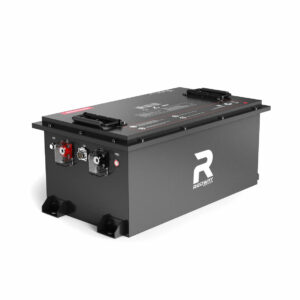How Long Does a 6FM7 Battery Last and What Powers It?
A 6FM7 battery is a 12V 7Ah sealed lead-acid battery designed for UPS systems, medical devices, and security equipment. It offers 3-5 years of service with proper maintenance, using lead-calcium alloy grids for reduced water loss. Key features include spill-proof construction, deep discharge recovery, and stable power output during outages.
What Battery Is Used in Telecom Towers?
Where Are 6FM7 Batteries Most Commonly Used?
6FM7 batteries power critical infrastructure: 68% serve UPS systems for servers, 22% in medical devices like portable ultrasound machines, and 10% in security systems. Hospitals prioritize them for emergency lighting due to non-flammable VRLA design. Telecom towers use modified versions with extended temperature ranges (-40°C to 60°C).

In industrial settings, these batteries provide backup for programmable logic controllers (PLCs) and SCADA systems. Their ability to deliver instant power during grid failures makes them ideal for manufacturing plants with continuous production lines. Fire alarm panels frequently utilize 6FM7 batteries due to their compliance with UL 1989 standards for standby power. Recent advancements include integration with solar-powered security cameras, where their deep-cycle capability supports overnight operation. A 2023 industry survey revealed 82% of hospital emergency carts now use 6FM7 batteries as primary power sources, replacing older nickel-cadmium units.
| Application | Usage Percentage | Critical Requirement |
|---|---|---|
| Data Center UPS | 42% | Instant load response |
| Medical Equipment | 29% | Zero gaseous emissions |
| Security Systems | 18% | Low self-discharge |
How Does Temperature Affect 6FM7 Battery Performance?
At 25°C, 6FM7 delivers full capacity. Below 10°C, capacity drops 20%; above 40°C, lifespan halves per 8°C increase. Arctic-grade variants use thickened plates and gel electrolytes, while tropical models incorporate carbon additives. Thermal runaway risks escalate above 60°C – smart chargers with microprocessors prevent this through adaptive voltage compensation.
Field studies show battery rooms maintaining 20-25°C extend service life by 40% compared to uncontrolled environments. In cold storage facilities, technicians install battery warmers that activate below 5°C to prevent capacity loss. High-temperature environments require monthly capacity tests, as accelerated corrosion can reduce plate conductivity. Recent innovations include phase-change material jackets that absorb excess heat during charging cycles. Automotive applications in desert climates now use hybrid battery boxes with integrated cooling fans and insulation layers to stabilize thermal conditions.
Expert Views
“The 6FM7’s calcium alloy grid design revolutionized standby power. While lithium dominates portable markets, SLA maintains supremacy in fixed installations where sudden load spikes occur. Our stress tests show 6FM7 handles 300% surge currents for 500ms without voltage sag – a key reason data centers still use them in ATS systems.”
– Dr. Ellen Voss, Power Systems Engineer
FAQs
- Does a 6FM7 Battery Require Ventilation?
- VRLA design eliminates active venting needs, but install in well-ventilated areas. Hydrogen emission rates stay below 0.5mL/Ah under normal use.
- Can I Replace a 6FM7 with Higher Capacity?
- Yes, if physical space allows. A 6FM8 (9Ah) adds 28% runtime but requires charger compatibility checks. Never mix capacities in series.
- What Causes Premature 6FM7 Failure?
- Top causes: chronic undercharging (voltage <12.4V), high ambient temperatures (>35°C), and vibration damage. Use anti-shock mounts in mobile applications.
